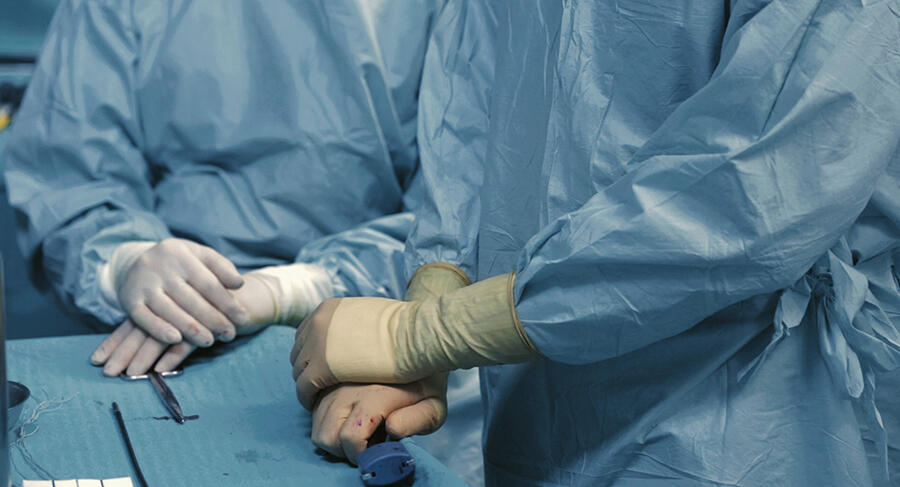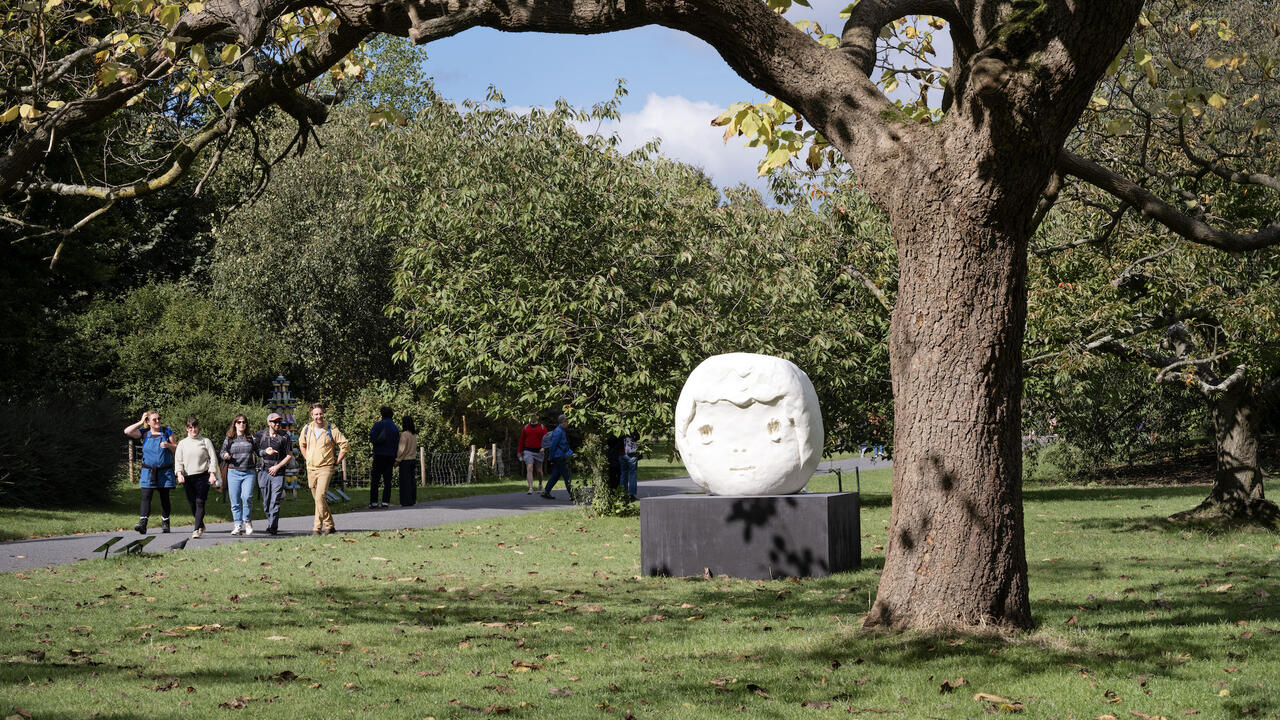Seven Exhibitions to See During Miart
From Ann Veronica Janssens’s architectural intervention at Pirelli HangarBicocca to David Cronenberg’s collaboration with Fondazione Prada
From Ann Veronica Janssens’s architectural intervention at Pirelli HangarBicocca to David Cronenberg’s collaboration with Fondazione Prada

Ann Veronica Janssens
Pirelli HangarBicocca
6 April – 30 July

For her exhibition ‘Grand Bal’, Brussels-based artist Ann Veronica Janssens has opened up Pirelli HangarBicocca to the elements: light streams into the dark space from gaps in the ceiling and wind blows in through openings in the walls of the former tyre factory. This intervention creates an extended and aleatory choreography in which the works in the space are rhythmically punctuated by a dance between light, fog, sound and time – and how these elements interact with the human body. Curated by Roberta Tenconi, the show presents a wide selection of the artist’s previous works together with new productions conceived specifically for the space. Highlights include Area (2023), a site-specific platform made of concrete bricks that visitors can walk on, and Swings (2000–23), a series of three swings hanging from the ceiling which, as the exhibition guide explains, serve as a means ‘for visitors to perceive their own movement and the air shift caused by their motion’.
‘Cere anatomiche’
Fondazione Prada
24 March – 17 July

Spread across two floors of the Podium at Fondazione Prada, ‘Cere anatomiche’ (Anatomical Waxes) is, according to the press materials, ‘an art exhibition, an anatomy lesson, a video about desire and an educational experiment’. Offering a creative vision informed by a scientific approach, the project is the result of a collaboration between filmmaker David Cronenberg and the human anatomy collection of La Specola Museum in Florence, which was inaugurated in 1775 as Europe’s first public scientific institution with an educational function. Greeting visitors as they enter is a short film by Cronenberg shown in a setting inspired by anatomical theatres (Four Unloved Women, Adrift on a Purposeless Sea, Experience the Ecstasy of Dissection, 2023). The director’s fascination with mutation, pleasure and contamination is emphasized by sensual close-ups of the wounds, faces and bodily parts of four 18th-century female wax figures, which were made for the ceroplastic workshop of La Specola. The upper floor showcases these models, along with nine body sections, taken from the museum’s ‘Obstetrics Room’, and a selection of anatomical drawings. After seeing Cronenberg’s film – which, to quote the director’s exhibition statement, focuses on the ‘almost religious rapture’ of the models’ faces – it’s impossible to look at them as purely educational tools.
Yuri Ancarani
PAC Padiglione d’Arte Contemporanea
4 April – 11 June

Curated by Diego Sileo and Iolanda Ratti, and produced in partnership with Museo d’Arte Moderna di Bologna, ‘Forget your Dreams’ is the first monographic exhibition in Italy dedicated to filmmaker Yuri Ancarani. Thoughtfully installed across PAC’s five rooms and parterre level, the project collates more than 20 years of work in which Ancarani addresses themes including the dynamics of labour, the trauma of modern society and the failure of capitalism. As if in an expanded cinema where sensory perception is amplified, viewers can explore works ranging from the artist’s first video series ‘Ricordi per moderni’ (Memories for Moderns, 2009) – shown on eight screens placed lengthwise in front of the darkened glass windows overlooking the garden outside – to trilogies such as Da Vinci (2012) and San Siro (2014). Also on view is Ancarani’s latest documentary, Il popolo delle donne (The People of Women, 2023), a 45-minute monologue by Marina Valcarenghi, a journalist and political activist during the 1960s and ’70s, who subsequently worked as a prison psychoanalyst for female victims of domestic abuse.
Elmgreen & Dragset and John Armleder
MASSIMODECARLO
16 March – 13 May

There surely can’t be a venue better suited to the twisted imaginary of Elmgreen & Dragset and John Armleder than MASSIMODECARLO in Milan. Each room of the iconic Casa Corbellini-Wassermann – one of the finest examples of Milanese rationalist architecture, built in the early 1930s by Italian architect Piero Portaluppi – is full of narrative potential. With a common passion, obsession even, for everyday objects and domestic spaces, the Scandinavian duo and the Swiss artist, who first met in the early 2000s, have filled the former palazzo with spatial interventions in which sculptures, paintings, artefacts and furniture interact with the existing interiors, as in a series of ceramics by Armleder installed directly on a built-in dresser (eg. Loasaceae, 2005). At times, the uncanny domestic atmosphere becomes almost psychedelic, such as in the combination of Social Media (White Poodle) (2023), a black and white merry-go-round by Elmgreen & Dragset, with two optical wall paintings by Armleder.
Sol Calero
Francesca Minini
22 March – 6 May

Sol Calero’s exhibition at Francesca Minini, ‘Casa encontrada’, is representative of the artist’s definitive style, an expanded painting practice that also includes site-specific and architectural interventions combining decorations, drawings, ceramics, objects and furniture. For this show, the Berlin-based, Venezuelan artist has devised a large-scale installation where notions of nature, memory and hospitality are interwoven in a setting that resembles an abandoned loggia (Casa Encontrada, Found Home, 2023). Upon entering the gallery, viewers are greeted by a mosaic of coloured tiles that suggests we are crossing the threshold of an archaeological site ripe for exploration. A landscape of geometrically painted walls, columns, arches and vaults evokes the outside world, while organic elements and shapes painted on a pair of new canvases, Casa Arapicara and Casa Encontrada (both 2023), focus on the dichotomy between nature and culture, which, as Francesco Scalas notes in his accompanying exhibition text, ‘does not seem to exist’.
Latifa Echakhch
kaufmann repetto
12 April – 26 May

Latifa Echakhch’s latest works, currently on display in her exhibition at kaufmann repetto, ‘Ricordi di Campo’ (Field Memories), draw inspiration from two sources: a series of pictures taken by her friend, photographer Sim Ouch, and images of the universe captured by the James Webb Space Telescope. The finished canvases are the result of a technique whereby the artist scratches and chips away layers of acrylic paint to expose the rough concrete surface below. Intended to explore the dualism of expectation and fulfilment associated with our experience of art and music, Echakhch’s large-scale, fresco-like paintings recall the fragments of images that return to us as faded memories. In Night Time (As Seen by Sim Ouch) (2023), for instance, only some elements of the original figure remain intact, revealing the discrepancy we often experience between a fleeting sensation and our futile attempts to capture it.
Alessandro Di Pietro
zaza’
12 April – 31 May

Entitled ‘The Project Manager Syndrome’, Alessandro Di Pietro’s first solo exhibition at zaza’ offers a comprehensive overview of the Milan-based artist’s practice, which focuses on the creation of hybrid environments inhabited by monstrous figures and obsolete forms of technology. For this project, the artist has used Gore-Tex-coated plasterboard panels as a backdrop against which to present drawings from his ‘Vampirelli’ series (all works 2023). Executed in coloured pencil, these three-quarter-length portraits expose the sitters’ necks, which the artist, in a press release for his earlier show ‘Occult Desserts’ (2022–23), referred to as ‘the point of weakness and desire of the man before he becomes a monster and attacks’. The exhibition also includes Block-notes I and Block-notes II – two Plexiglass boxes containing a storyboard of overlapping texts, 35mm film, prints, drawings and notes on acetate – as well as Fade Paw Study (galateo) and Fade Paw Study (modern galateo): two bronze sculptures formed from multiple casts of the same animal paw, giving the appearance of ancient relics.
Main image: Clemente Susini and Giuseppe Ferrini, Venus, recumbent female statue, 1782, installation view. Courtesy: La Specola, Museum of Natural History of the University of Florence




















